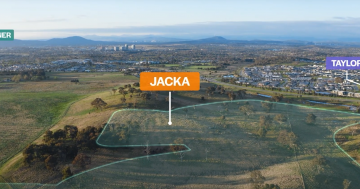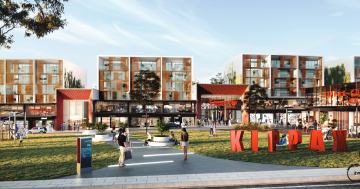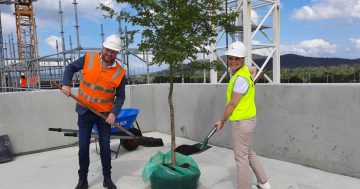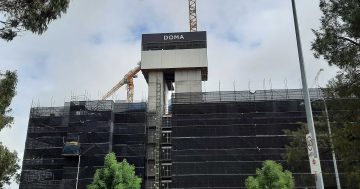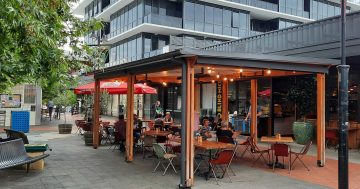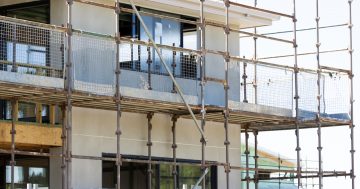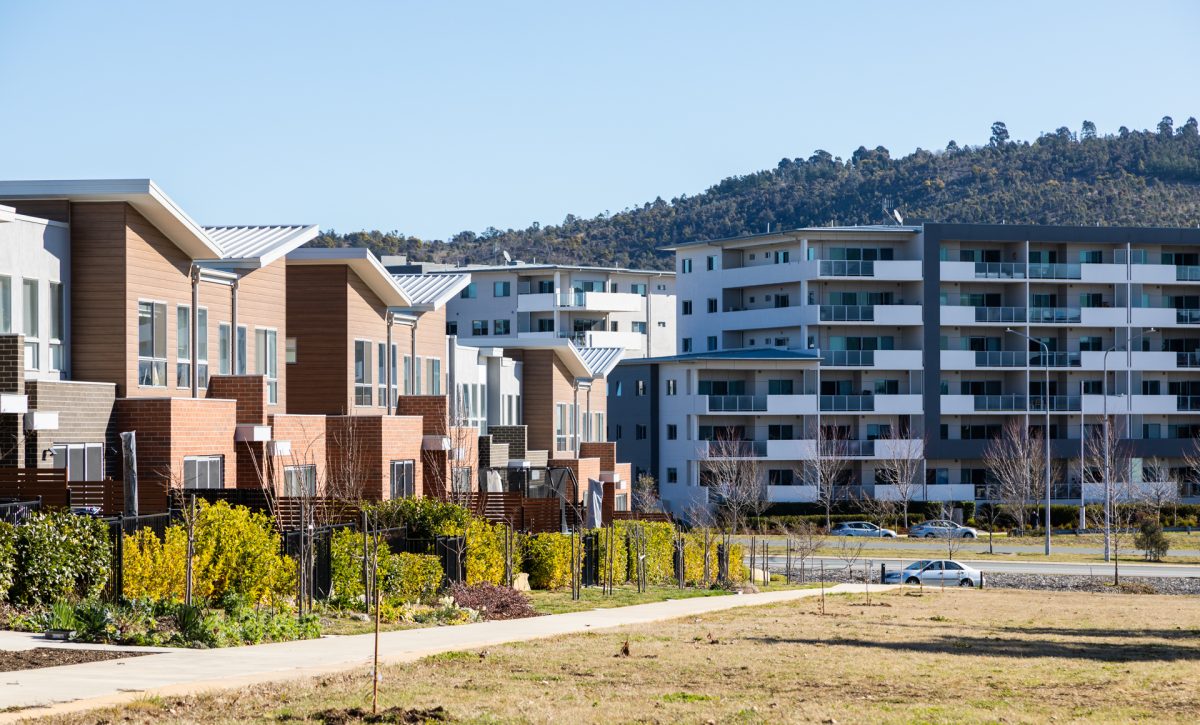
Densification will present many challenges for Canberra’s suburbs. Photo: Michelle Kroll.
Many would see the Master Builders’ call for Canberra’s single-block residential zone to be unlocked for medium-density housing as simply self-serving.
The conversion of suitable-sized blocks to duplexes, townhouses and low-rise apartments would be a bonanza for the building industry.
But whatever reflexive aversion to the loss of the traditional family home and the garden city values it embodies does not detract from the fact that Canberra needs more housing, especially in the more affordable range.
There is already a rental crisis in this city, with extremely low vacancy rates and rents among the highest in the country. That hurts, especially for those on low to moderate incomes.
For many, the homeownership dream is now a fantasy, and for those middle workers who can somehow muster a deposit and qualify for a loan, a house with a backyard is just not on the menu.
The economic forces in play – overblown prices, rising interest rates, high inflation and stagnant wages – are driving more permanent rental arrangements, demand for public and social housing, and denser, cheaper housing types.
In Canberra, with its relatively high salaries, there will still be those who can afford a million-dollar mortgage, but even many of them are reassessing their needs.
Master Builders rightly points out that sprawling ever outward is no solution, especially when people want to be closer to where they work and play and have lesser commutes.
It may be a hard fact to swallow, but this is what Australia’s housing market has come to.
Cannibalising the suburbs is the only way Canberra, as it heads to half a million or more people, can realistically meet its citizens’ housing needs.
Having large under-utilised blocks in suburbs that have virtually locked out many people can no longer be justified.
If infill is the way forward, as this government argues it is, then the key questions are how it is to be executed and who it is to be done for.
The obvious contradiction to be managed is between the government’s Living Infrastructure policies, including the 30 per cent tree canopy target, and the increased building footprint.
Master Builders wants more flexibility with plot ratios, but infill must not mean paying lip service to these and climate change policies and end up with heat islands and the loss of the Bush Capital character.
The new flexible planning system, which arguably is being devised to facilitate infill, should not be a free-for-all that means those vaunted outcomes Chief Planner Ben Ponton is always going on about just amount to a new urban jungle full of dodgy developments.
The push from Master Builders and other pro-housing groups is directed to the missing middle – compact, but not cramped family housing, at a reasonable cost.
That is what should guide the government.
Included in that mix will be the need for a greater public and social housing component because the market itself cannot be expected or trusted to deliver housing where it is needed most.
A totally market-based approach will only lead to gold-plated developments from which only the wealthy and investors will benefit.
The other contradiction for an ACT government to manage is its role as land seller and property developer and tax collector.
Despite the tax reform process and increasing stamp duty exemptions, infill also promises a windfall to government. It will have to balance the need to boost housing with the need to maintain the revenues to provide the Territory’s services.
This will change Canberra. It is imperative that if we are to go down this road that it be done properly.













